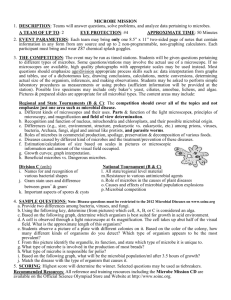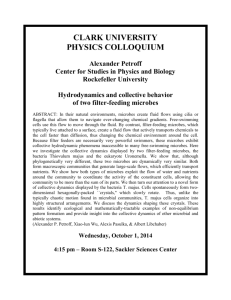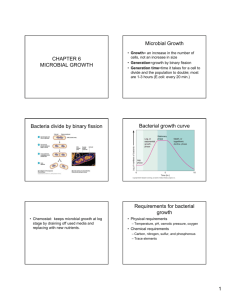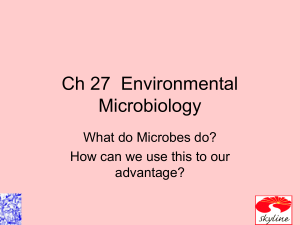Test #2 Review Questions
advertisement
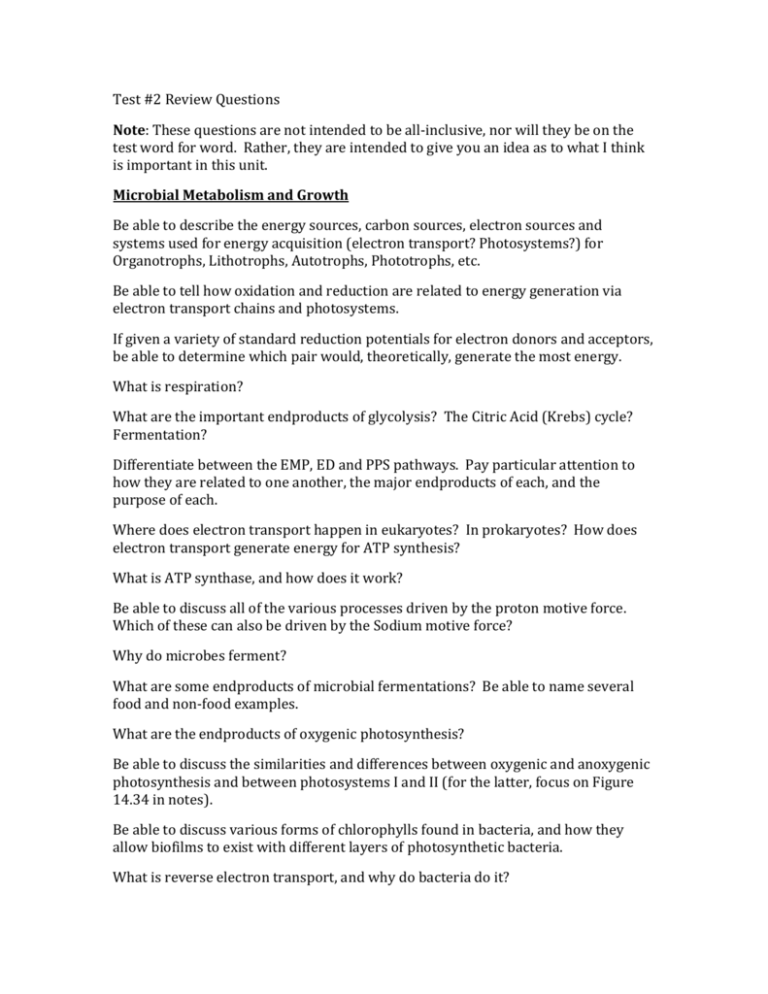
Test #2 Review Questions Note: These questions are not intended to be all-inclusive, nor will they be on the test word for word. Rather, they are intended to give you an idea as to what I think is important in this unit. Microbial Metabolism and Growth Be able to describe the energy sources, carbon sources, electron sources and systems used for energy acquisition (electron transport? Photosystems?) for Organotrophs, Lithotrophs, Autotrophs, Phototrophs, etc. Be able to tell how oxidation and reduction are related to energy generation via electron transport chains and photosystems. If given a variety of standard reduction potentials for electron donors and acceptors, be able to determine which pair would, theoretically, generate the most energy. What is respiration? What are the important endproducts of glycolysis? The Citric Acid (Krebs) cycle? Fermentation? Differentiate between the EMP, ED and PPS pathways. Pay particular attention to how they are related to one another, the major endproducts of each, and the purpose of each. Where does electron transport happen in eukaryotes? In prokaryotes? How does electron transport generate energy for ATP synthesis? What is ATP synthase, and how does it work? Be able to discuss all of the various processes driven by the proton motive force. Which of these can also be driven by the Sodium motive force? Why do microbes ferment? What are some endproducts of microbial fermentations? Be able to name several food and non-food examples. What are the endproducts of oxygenic photosynthesis? Be able to discuss the similarities and differences between oxygenic and anoxygenic photosynthesis and between photosystems I and II (for the latter, focus on Figure 14.34 in notes). Be able to discuss various forms of chlorophylls found in bacteria, and how they allow biofilms to exist with different layers of photosynthetic bacteria. What is reverse electron transport, and why do bacteria do it? What is the Calvin cycle, and what are its major end-products? Be able to discuss the various stages of the microbial population growth curve. The Origin and Diversity of Life When did microbes first evolve, and what types of metabolism did they most likely have? Be able to discuss various scientific models for how the first biological molecules were formed. When did oxygenic photosynthesis evolve, and why was this so important? How do we know that eukaryotes evolved from prokaryotic ancestors? Various hypotheses exist regarding the origins of viruses – be able to discuss them. What are the basic tenets of natural selection? Show how the development of antibiotic resistance as a result of taking an incomplete does of antibiotics follows these tenets. Be able to discuss the conflict between natural selection and virulence – and discuss the trade-off hypothesis, the short-sighted evolution hypothesis and the coincidental evolution hypothesis in light of this conflict. Discuss several examples of how microbes may actually influence the evolution of their hosts. What are trophic levels, and which levels do bacteria fill in ecosystems? Is a bacterial colony a population, a community or an ecosystem? Explain. What is a biofilm? How do biofilms help bacteria survive? Be able to discuss soil structure and the types of microbes you would expect to see in each horizon/layer What roles do microbes play in the soil food web? Give examples. Discuss the relationships that exist between microbes and macrobes (plants) in the rhizoplane and the rhizosphere. Compare and contrast Endomycorrhizae and Ectomycorrhizae Microbially speaking, how do wetland soils differ from non-wetland soils? Differentiate between oligotrophic and eutrophic lakes. Show the types of microbes that you would expect to find in each, and their relative abundances. Be sure to discuss the relative size of oxygenic and anoxygenic layers in each. How do marine ecosystems differ from freshwater ecosystems? How are they similar? What are Dead Zones, and how does the toilet you flush (or the fertilizers you use) in Selinsgrove impact them? What are biogeochemical cycles? Be able to discuss the roles of microbes in the carbon cycle, the sulfur cycle, the nitrogen cycle and the phosphorus cycle. Pay particular attention to those stages that are largely, or exclusively driven by bacterial processes. Which biogeochemical cycles produce greenhouse gases, and what are the roles of microbes in these processes? Be able to discuss specific examples of microbial mutualism, commensalism, competition and predation. Describe in detail the symbiotic relationship between Rhizobium and a legume host. How is it established, and what does each partner get out of the relationship? Describe the symbiotic relationship between ruminants and their microbial partners. How does feeding grain to cattle promote the growth of E. coli while feeding grass and hay tends to promote the growth of other types of microbes? Why do cattle often get more or less the same nutrients no matter what you feed them? Be able to discuss each example of an extreme environment that we discussed in class, and to describe how microbes adapt to each of those environments (Chagnes to cell walls, cell membranes, nucleic acids, metabolism, etc.) Microbial Communication Be able to describe what quorum sensing is, and the general types of molecules used as quorum sensing molecules (AHLs, etc.) You do not need to know, nor recognize specific structures. Be able to describe how quorum sensing results in the production of light in Vibrio fischeri, and the expression of virulence factors in Candida, Staphylococci, Xanthomonas and Vibrio cholerae. Quorum sensing not only mediates conversations between members of the same species, but can also mediate conversations between different species, genera and even kingdoms. Be prepared to discuss 1-2 examples of each of these kinds of conversations in some detail, and to describe the outcomes of the conversations for both species. Big Problems, Little Solutions What types of toxins exist in our environment, and what do we mean when we say that microbes can bioremediate them? Differentiate between bioleaching, biosorption, biosparging, bioventing, biostimulationphytoremediation, enzyme-catalyzed treatment, and natural attenuation. What types of factors influence the efficiency of bioremediation? Use the Gulf Oil Spill as an example. Where do toxin-eating microbes come from? What are biofuels? Be able to discuss the pros and cons of the biofuels that we discussed in class.




